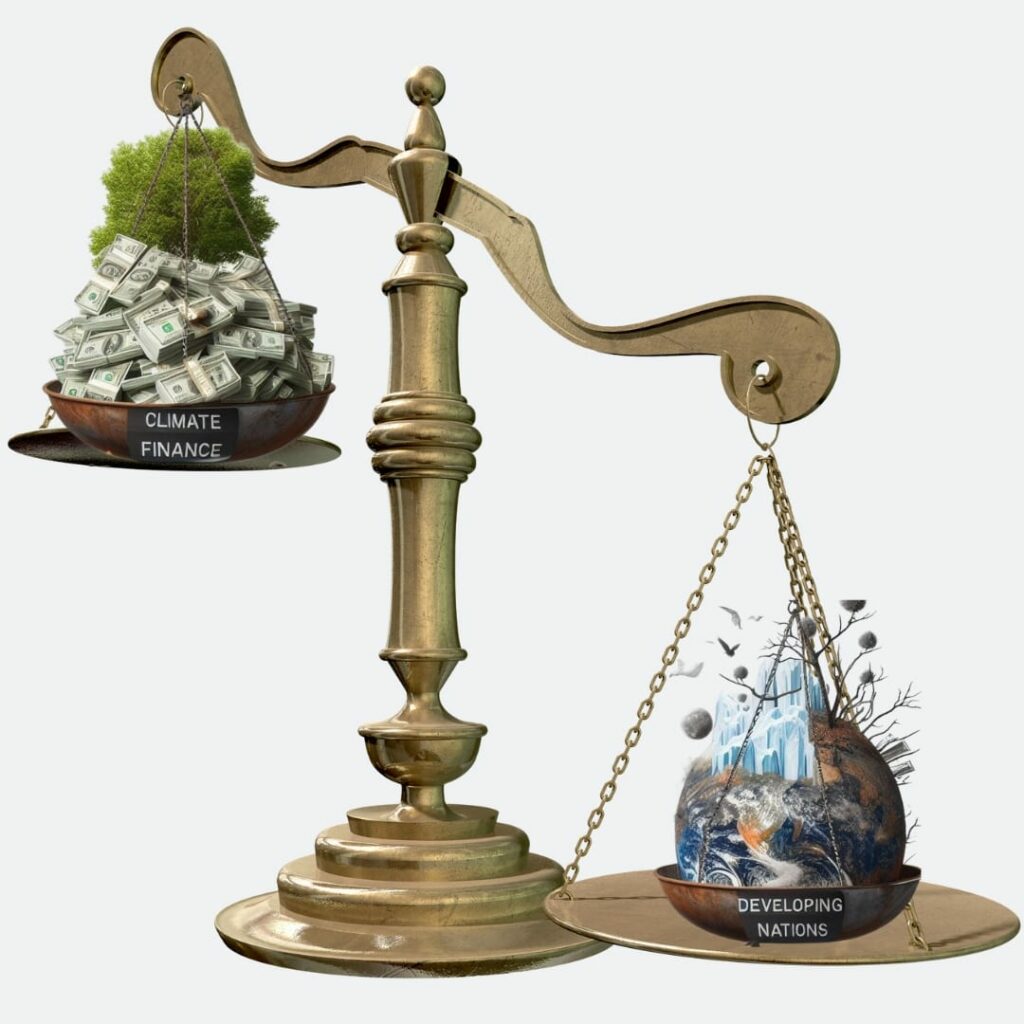Context:
A recent OECD report confirms that developed countries finally met the long-standing pledge of providing $100 billion annually in climate finance to developing nations.

OECD Report Findings:
- Achievement: In 2022, developed countries provided and mobilized $115.9 billion in climate finance to developing countries.
- Timing: This achievement was realized two years later than the original 2020 target but one year earlier than OECD’s projections.
- The public climate finance accounted for close to 80% of the total financial flow in 2022.
Organisation for Economic Co-operation and Development (OECD)
- It’s an intergovernmental economic organization of 38 countries for stimulating economic progress and world trade.
- Established in 1961 and headquartered in Paris.
- OECD member countries account for 63% of world GDP, three-quarters of world trade, 95% of world official development assistance, over half of the world’s energy consumption, and 18 percent of the world’s population.
Background:
- 2009 Commitment: At COP-15 (Copenhagen Summit), developed countries pledged to provide $100 billion annually by 2020 to help developing countries mitigate and adapt to climate change.
- Paris Agreement (2015): Article 9 mandates developed countries to provide financial resources for both mitigation and adaptation efforts in developing countries.
The Paris Agreement (2015) is a global pact to combat climate change. It aims to limit global warming to well below 2°C, ideally 1.5°C, by reducing greenhouse gas emissions (NDCs). Countries report progress and receive financial aid (developed to developing) for mitigation (reducing emissions) and adaptation (building resilience).
2022 Climate Finance Distribution:
Loans Dominating:
- 70% of public climate finance in 2022 were loans, and only 28% were grants.
- Lower-income countries: 64% of public finance was grants.
- Lower-middle-income countries: 13% of public finance was grants.
Multilateral Development Banks (MDBs): Between 2016-2022, close to 90% of financing provided by multilateral developmental banks (MDBS) took the form of loans.
- The same applies to bilateral providers, with 57% as loans and 39% as grants.
- Multilateral climate funds, on the other hand, provided 54% as grants and 39% as loans.
Mitigation vs. Adaptation: Most finances went towards mitigation, with adaptation receiving $32.4 billion (2022).
Types of Climate Finance
Public Finance:
- Bilateral (country-to-country aid) and multilateral (through organizations like the World Bank).
- Primarily in the form of grants but also includes loans.
Private Finance:
- Investments from banks, pension funds, and other private entities seeking financial returns.
Concerns:
- Delayed Delivery: Developed nations missed the initial 2020 target.
- Composition: Loans constitute a significant portion (70%) of public finance, raising debt concerns for developing countries.
- Transparency & Adequacy: Experts question the accounting methods and whether $100 billion is enough to address developing countries’ needs.
- Grant vs. Loan Ratio: A larger share of grants is crucial for sustainable support.
Looking Ahead:
- The $100 billion goal is considered inadequate to meet developing country needs. Emerging markets and developing countries (excluding China) need $1 trillion annually by 2030.
- Negotiations are underway for a “New Collective Quantified Goal” with a higher target, improved structure, and diversified sources of finance.
- Reaching an agreement by the end of 2024 remains a challenge. Divergences remain on basic elements such as contribution and recipient criteria.

